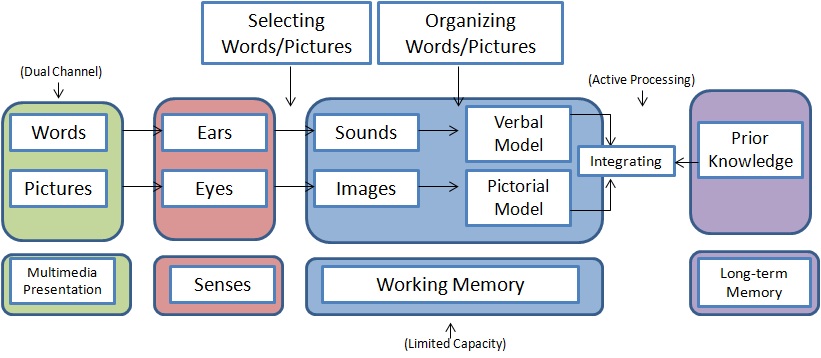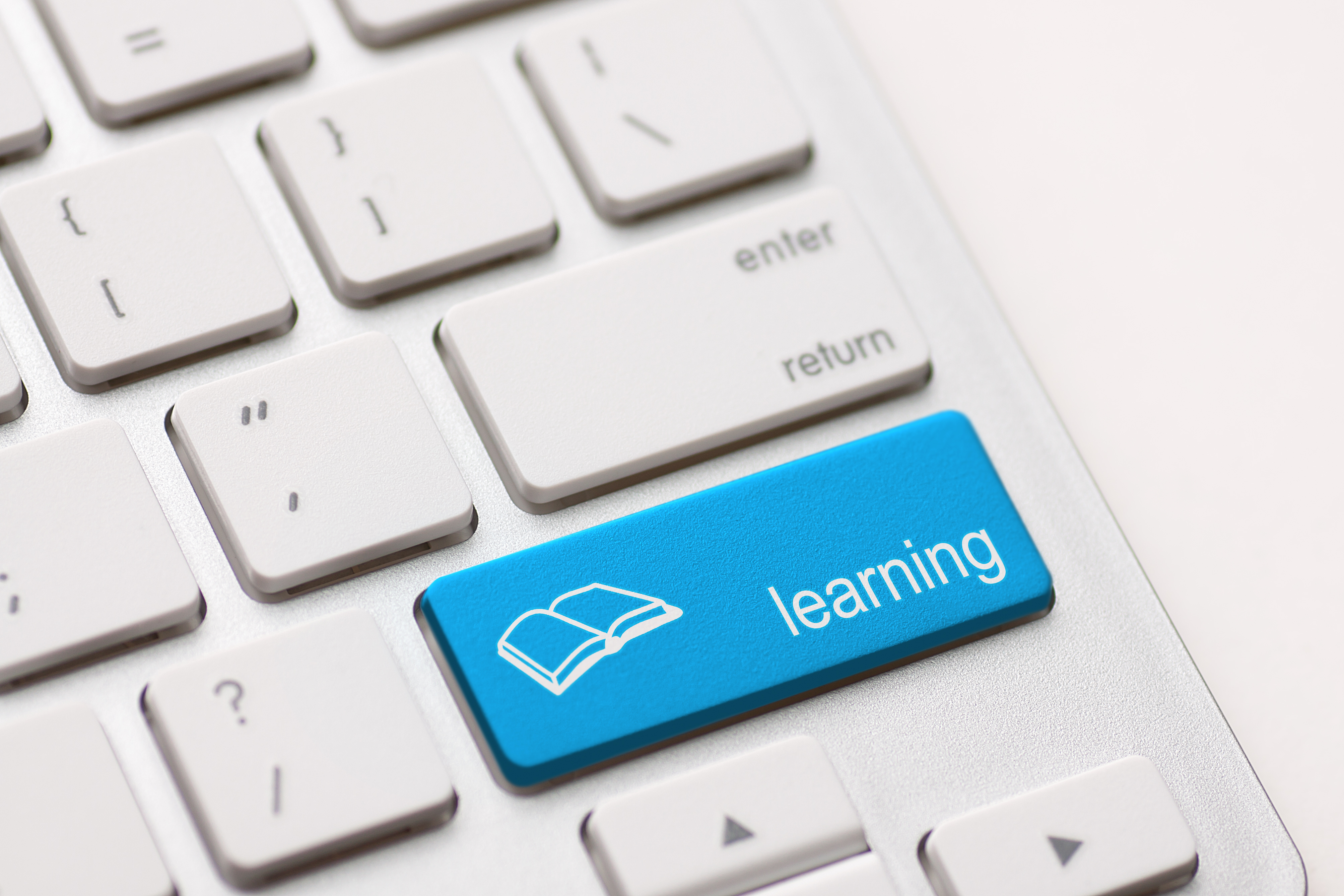Module 1 - Section 3
Introduction to Learning Theories
It is important to know about learning theories.
Introduction to Learning Theories
What is a theory?
Behaviourism
Behaviourism assumes that the learner is passive in the learning process, simply responding to external stimuli. Change in behaviour due to these external stimuli demonstrates a universal learning process known as “conditioning”. Classical conditioning occurs when a natural reflex responds to a stimulus, as in the case of Pavlov’s dogs. Operant conditioning occurs when a response to a stimulus is reinforced, as in the case of Skinner’s box.
Sign up for Ted-Ed and work your way through this lesson on classical and operant conditioning.

Activity 2
Blog
Have you experienced classical or operant conditioning? Have a look at these videos and consider the relevance of behaviourism today:
Pavlovian reactions aren't just for dogs - Benjamin N. Witts
The Skinner Box - How Games Condition People to Play More
Then write a blog post sharing an example of classical or operant conditioning you’ve experienced in your own life.
Cognitivism
Cognitivism defines learning as the process of acquiring, storing, and retrieving information.
Watch this video of Bruner and Ausubel’s theories and consider the Instructors’ role in each theory.
Theories and Effects
Discovery Theory
This is also known as inquiry-based instruction, where learning is best achieved by learners discovering new information for themselves.
Schema Theory
New information is related to old. Activating “schemata” is the activity of presenting the context so relevant information is easy to retrieve. It is prevalent in language learning where learners are presented with a picture of the topic first to get them thinking about their prior knowledge in that area.
Three-Stage Information Processing Model
Information is presented, enters the senses (sensory register), is processed by short-term memory and then transferred to (or integrated into) long- term memory for storage and retrieval.
Meaningful Effects
If a learner links information with prior schema it is easier to learn and remember.
Serial Position Effects
The first and last items on a list are easiest to remember, unless the item is particularly highlighted or unusual.
Practice Effects
Practicing improves retention, particularly if it is distributed practice (different contexts).
Transfer Effects
The effect of prior learning on processing new information.
Interference Effects
The interference of prior learning on processing new information.
Organisation Effects
Grouping information into categories makes it easier to remember.
Levels of Processing Effects
Deeper learning occurs when we understand the high-level semantic meaning of a work rather than simply the physical characteristics.
Levels of Processing Effects
TRcall of information is improved if you are in the same state (context) as when you processed the information. So, for example, if you have to sit an exam in a silent exam hall, you will perform better if you study in silence.
Mnemonic Effects
A process to organise meaningless information into a more meaningful semantic context. For example, e.g. "Richard of York gave battle in vain" for the colours of the rainbow (Red, Orange, Yellow, Green, Blue, Indigo, Violet).
Advance Organisers
Tactics to prepare the learner for the lesson ahead; for example, an introduction, a visual, a title, anything that activates the schema and enables the learner to better understand the new information.
Further Reading
Introduction to Learning Theories
What is a theory?
Behaviourism
Behaviourism assumes that the learner is passive in the learning process, simply responding to external stimuli. Change in behaviour due to these external stimuli demonstrates a universal learning process known as “conditioning”. Classical conditioning occurs when a natural reflex responds to a stimulus, as in the case of Pavlov’s dogs. Operant conditioning occurs when a response to a stimulus is reinforced, as in the case of Skinner’s box.
Sign up for Ted-Ed and work your way through this lesson on classical and operant conditioning.
COMING TO TERMS: DEFINING WHAT IS
Before we continue with our lesson, it is important to define what we mean by "Multimedia Learning" and "Meaningful Learning".
Please watch the YouTube video to find out more.
Multimedia Learning
It may be more apt to think of multimedia learning as multimodal. When learners learn through more than one sense, in the case of multimedia, sight and hearing, that learner is learning multimodaley. Multimedia instruction is a presentation that uses both words and pictures and intends to produce the outcome of learning. As Richard E. Mayer succinctly puts it “Visual and verbal processing refer to two different sense modalities (seeing;hearing); animation and narration refer to two different presentation media. For example: Using a Powerpoint while verbally explaining the concept of gravity.
Meaningful Learning
Meaningful Learning is a deep understanding of the material and the ability to transfer what was learned to new situations. It requires taking presented material, organising it, and matching or integrating it with what the learner already knows. Learning outcomes are assessed with problem-solving transfer tests. For example: The learner is learning how to create a formula to average a column of numbers using Excel. The learner already knows what an average means and knows how to enter numbers into Excel. A problem solving test could be to enter the numbers 1,2,3,4,5,and 6 into an Excel spreadsheet and find the average using the formula function.
Now that these terms have been explained, let's look at how the learners' mind works when using multimedia instruction.
What's going on in there? How the mind works in multimedia instruciton
Understanding how the leaner's mind works is paramount in designing multimedia instruction that will provide opportunities for meaningful learning. Cognitive science has made 3 basic assumptions about the learning process:
Dual Channel
Under this assumption, humans are thought to process information through two “channels.” There is the auditory/ verbal channel for processing auditory input and verbal representations and a visual/pictorial channel for processing visual input and pictorial representations.
Limited Capacity
Now the issue of Limited Capacity comes into play because even with two channels operating, cognitive processing is limited in both channels. Keep in mind that working memory can only hold between 5-9 pieces or “chunks” of information at a time.
Active Processing
In order for meaningful learning to take place, Active Processing must be enabled and that means heavy duty cognition in both the verbal and visual channels. In multimedia learning, there are five cognitive processes that need to be engaged in order for active processing to “kick in”
But how does that look? Enter the Cognitive Theory of Multimedia Learning.
Cognitive Theory of Multimedia Learning
The Cognitive Theory of Multimedia Learning model depicts the dual- channel processing going in the learner's mind when using multimedia instruction. This model was created by Richard E. Mayer and Roxana Moreno and presented in their paper "Nine Ways to Reduce Cognitive Load in Multimedia Learning" in 2003. Keep in mind the three assumptions of Dual Channel, Limited Capacity and Active Processing, as we explore the cognitive theory of multimedia learning.

The two rows of the model represent the two information-processing channels: the auditory/verbal channel and the visual/pictorial channel (dual-channel assumption). The five columns each represent the modes of knowledge representations or physical representations, such as words or pictures. Sensory representations are those that take place in the ears or eyes of the learner, while shallow working memory representations are the sounds or images a learner notices or attends to during the instruction. Deep working memory representations are verbal and pictorial models constructed by the learner, and lastly, long-term memory representations are what the learner already knows about this particular instruction.
Multimedia Learning requires a lot of cognitive processing in both channels. Working memory has to make representations of sounds and images. Deep working memory is busy making verbal and pictorial models, and long-term memory is searching for and retrieving relevant prior knowledge.
Cognitive Theory of MML Continued
Remember the 5 cognitive processes - selecting words, selecting images, organising words, organising images, and integrating? That is known as Essential Processing and is one part of the total cognitive demand of the learner. The arrows in the model represent this cognitive processing. The arrow from words to eyes represent printed words being seen by the eyes; the arrow from words to ears represent spoken words being heard by the ears; and the arrow from pictures to eyes represent pictures or images being seen by the eyes. The selecting arrows represent the learner’s attention to some of the auditory or visual sensations coming in from the ears or eyes. Arrows labeled organising represent the learner's construction of a coherent verbal or a pictorial representation based, in part, from the incoming words and images. This is known as Representational Holding.

Dual Channel
Finally, the arrow labeled integrating represents the merging of the verbal model, the pictorial model, and relevant prior knowledge. The selecting and organising processes may be guided partially by prior knowledge activated by the learner. Another type of cognitive demand is Incidental Processing. Incidental processing are elements of the instruction that while interesting, are not essential to meaningful learning. Although not essential, their presence also requires processing and thus contributes to total cognitive demand. Cognitive Demand is a combination of all three demands. We can think of it as an equation:
Finally, the arrow labeled integrating represents the merging of the verbal model, the pictorial model, and relevant prior knowledge. The selecting and organising processes may be guided partially by prior knowledge activated by the learner. Another type of cognitive demand is Incidental Processing. Incidental processing are elements of the instruction that while interesting, are not essential to meaningful learning. Although not essential, their presence also requires processing and thus contributes to total cognitive demand. Cognitive Demand is a combination of all three demands. We can think of it as an equation:
Limited Capacity
As depicted in the model, all of those arrows can add up to a lot of processing demand. For the learner, this only becomes a problem if the demand exceeds the learner cognitive capacity. Let's take a look at some principals of capacity.
- The capacity for physically presenting words and pictures is virtually unlimited
- The capacity for storing knowledge in long-term memory is virtually unlimited.
- The capacity for mentally holding and manipulating words and images in working memory is limited.
Given principal number 3, we now know that the working memory columns (shaded blue) in the model, are subject to the limited- capacity assumption. These demands can create drags on learner's processing capacity and can easily turn into Cognitive Overload. Now comes the dilemma. How do we as digital learning designers create an opportunity for “meaningful learning” which requires copious amounts of cognition, when the learner capacity is so limited? This means we have to be attentive to learner cognitive load while still creating space for meaningful learning to take place. We can also think of “Cognitive Overload” as an equation.
Learner’s intended cognitive processing (Demand) > Learner’s available cognitive capacity = Cognitive Overload
In short, introduce too many concepts in too many ways and overload is almost guaranteed. So what do we do about it? We can try to reduce cognitive load by redistributing essential processing, reducing incidental processing, and/or reducing representational holding. Sounds like a neat trick you say, but how?
What's Your Type of Overload?
Reducing learner overload is a little like “playing doctor.” We diagnosis the issue, prescribe and apply the instructional salve or principal directly to what is causing the overload. Let’s look at 5 overload scenarios and their is causing the overload. Let’s look at 5 overload scenarios and their associated instructional fixes.
What’s Your Type of Overload?NOW TEST YOUR UNDERSTANDING HERE:
Reducing learner overload is a little like “playing doctor.” We diagnosis the issue, prescribe and apply the instructional salve or principal directly to what is causing the overload. Let’s look at 5 overload scenarios and their is causing the overload. Let’s look at 5 overload scenarios and their associated instructional fixes.
Test Your Understanding Find and Fix Find and Fix AnswersConclusion
Reducing cognitive load is the responsibility of all digital learning designers. In taking steps to make instruction easier to understand, the designer not only helps the learner but also themselves. Why create instruction that learners struggle unnecessarily to understand? The overarching objective of all instructional design and the designers is to transfer learning.
As more instruction utilises more powerful and sophisticated multimedia, keeping the learner’s cognitive load in the forefront of the designer’s mind will grow in importance. Understanding how to create the best digital learning design to facilitated meaningful learning when using multimedia is where good instructional design should begin and end. After you design instruction, it is also important to go back through the design and look for more issues that could cause cognitive overload. By employing the principals of modality, signaling, coherence, spatial contiguity, temporal contiguity, redundancy, pretraining, and segmenting most overload can not only be reduced but eliminated.
More on the Cognitive Theory of Multimedia Learning
More on these principles on the following webpages.
Reducing learner overload is a little like “playing doctor.” We diagnosis the issue, prescribe and apply the instructional salve or principal directly to what is causing the overload. Let’s look at 5 overload scenarios and their is causing the overload. Let’s look at 5 overload scenarios and their associated instructional fixes.

More on these principles on the following webpages.
Clark, R.C. and Mayer, R.E., (2016). E-learning and the science of instruction: Proven guidelines for consumers and designers of multimedia learning. John Wiley & Sons.
Quinn Clark N. (2021) Learning Science for Instructional Designers: From Cognition to Application. ATD Press